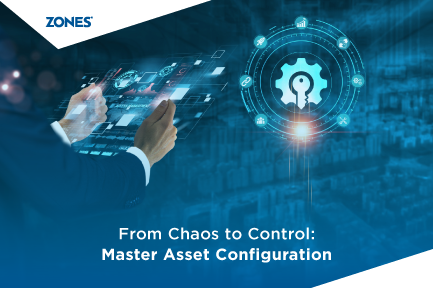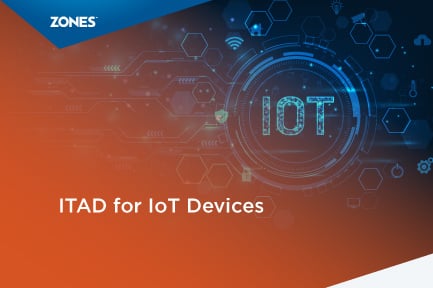IT Asset Disposition (ITAD) & Cybersecurity: Safeguarding Your Data in the Digital Age
Data security has never been as important as before, especially in the modern world, which instantly turns to the online sphere to solve most...
4 min read
Ivan Tetyushev : Jun 24, 2025 9:25:59 AM

As hybrid IT environments become the norm, spanning cloud, on-premise, SaaS, and edge computing, the ability to configure and govern IT assets is not just an operational necessity but a strategic imperative for business resilience.
Misconfigured assets are one of the leading causes of data breaches, compliance violations, and service outages. According to a 2024 Thales Cloud Security Study, 31% of cloud security and data breaches are attributed to misconfiguration. Despite this, organizations still lack a comprehensive strategy for IT asset configuration. Instead, they have a fragmented patchwork of tools, manual processes, and undocumented standards. Moreover, in many organizations, asset configurations are decentralized and dangerously outdated.
Modern IT ecosystems operate with thousands even millions of endpoints, devices, and services. Each must be configured according to policy, patched regularly, and monitored for unauthorized changes. A single misconfigured setting—whether a firewall rule, access control permission, or software deployment—can be exploited to compromise the entire environment.
Appropriate asset configuration ensures that your assets:
The value of IT asset configuration management isn’t just operational—it’s strategic. A mature configuration strategy enables cross-functional outcomes across IT, security, compliance, and finance.
|
Objective |
Outcome |
|
Visibility |
Complete understanding of all asset states, versions, and dependencies across environments. |
|
Control |
Ability to enforce operational and security standards consistently and automatically. |
|
Consistency |
Elimination of drift and variability between environments (e.g., test vs. production). |
|
Resilience |
Faster root cause analysis, recovery, and rollback in the event of an incident or outage. |
|
Compliance |
Traceable, audit-ready evidence of configuration controls across regulatory frameworks. |
|
Efficiency |
Lower operational overhead through automation and reduced manual remediation. |
To help assess your current posture, consider visualizing where your organization stands with an Asset Configuration Maturity Model:
This maturity model can also serve as an executive dashboard metric when evaluating IT operations and cyber readiness.

Start by establishing a formal Configuration Management Policy (CMP) that outlines asset types, baseline requirements, change protocols, and ownership. This framework provides the foundation that governs what’s configured, how, and by whom.
Utilize automated discovery tools to scan and inventory your full environment—including on-premise hardware, cloud instances, SaaS services, and mobile endpoints. Lack of visibility can create cascading security and operational risks.
Recommended: ServiceNow Discovery, Qualys, Lansweeper, AWS Config
Develop approved baseline configurations that reflect both technical standards and business risk—for example, specifying mandatory operating system (OS) versions, security settings, and installed agents. These baselines should serve as a standard for monitoring compliance and detecting configuration drift.
Invest in a configuration management database (CMDB) that maps not only asset inventories but also their relationships and historical changes. A modern CMDB enables root cause analysis, impact forecasting, and policy validation across the IT estate.
Not all assets require the same level of control and scrutiny. Classify assets into risk tiers based on business impact, regulatory requirements, and external exposure to guide configuration enforcement, monitoring frequency, and incident response prioritization.
Manual configuration is not scalable or reliable. Use infrastructure-as-code (IaC), configuration management tools, and cloud-native policies to ensure configurations are deployed consistently and deviations are remediated in real time.
Integrate configuration as part of the change management process. Whether software updates, permission changes, or infrastructure deployments, each configuration change must be controlled and auditable, especially in production environments. Also, proper documentation, risk assessment, and approval workflows should be ensured to reduce unplanned downtime.
Ensure configuration data is shared seamlessly across systems. This enables security teams to correlate threat events, IT teams to investigate incidents, and developers to validate infrastructure state pre-deployment, accelerating resolution.
Technical controls alone aren’t enough. Build awareness around how small changes can create outsized risk and assign clear accountability for configuration oversight.
Configuration is not a one-time setup but a continuous discipline. Regular audits should measure compliance with baselines, the frequency of unauthorized changes, and the success of drift prevention tools. Use these metrics to upgrade tooling and communicate performance to executive stakeholders.

A strong IT asset configuration strategy is about control, consistency, and clarity. It's what separates a chaotic, vulnerable IT environment from one that’s scalable, secure, and cost-effective.
IT asset configuration isn’t just a compliance checkbox it’s a competitive differentiator. Organizations with strong configuration management:
You don’t need a huge team or a million-dollar platform to build a scalable and secure IT asset configuration strategy. Start with these 10 fundamentals, adopt the right tools, and foster a culture that treats asset configuration as a core pillar of IT governance.
For expert assistance in building or optimizing your enterprise configuration environment, visit our IT Integration and Configuration page.

Data security has never been as important as before, especially in the modern world, which instantly turns to the online sphere to solve most...

Today, businesses operating across different locations face unique challenges in IT asset management (ITAM) with respect to tracking and managing...

With an unprecedented rate of ongoing technological progress marked by the increasing number of mobile phones, smart gadgets, and things connected to...